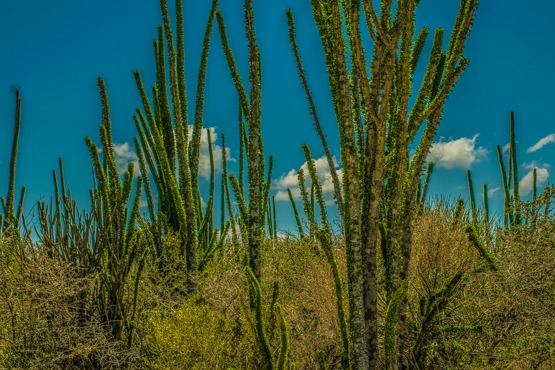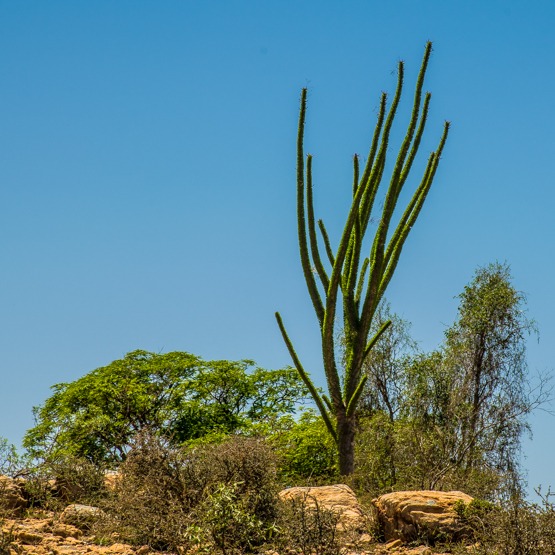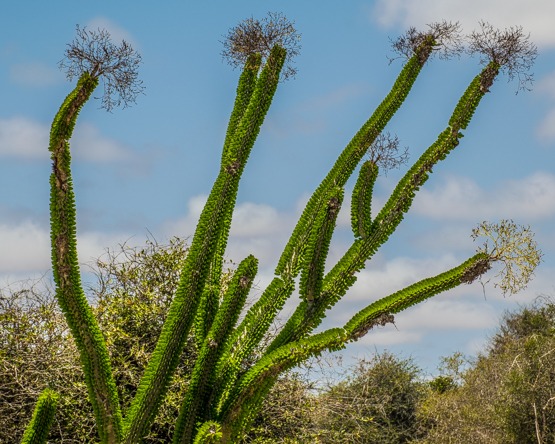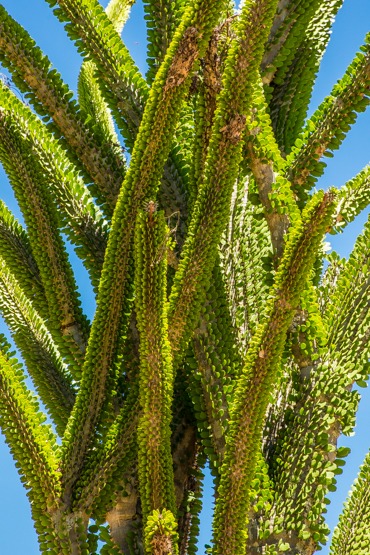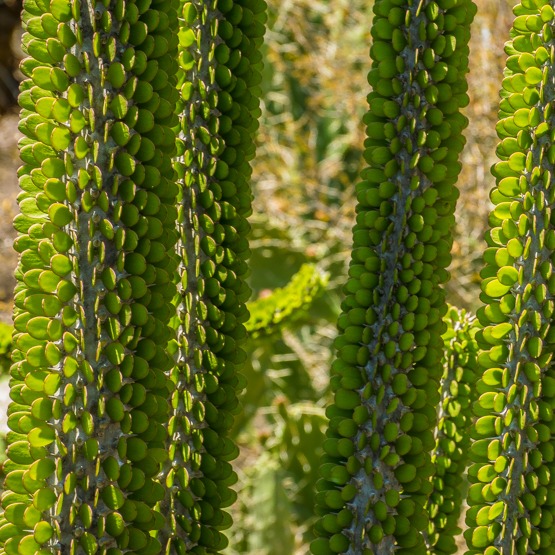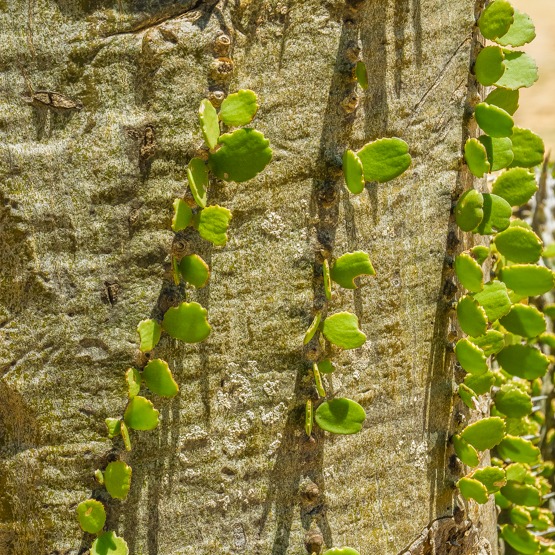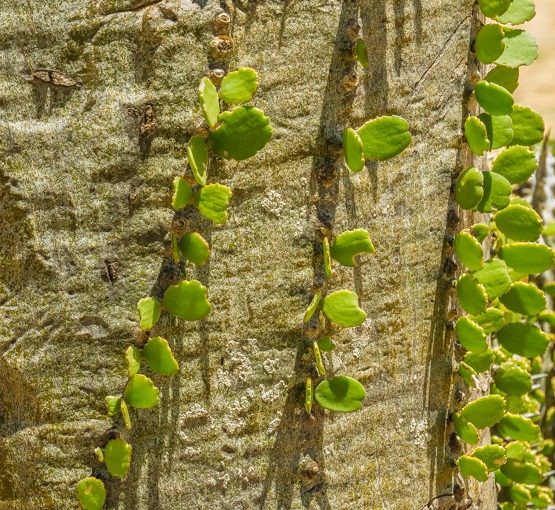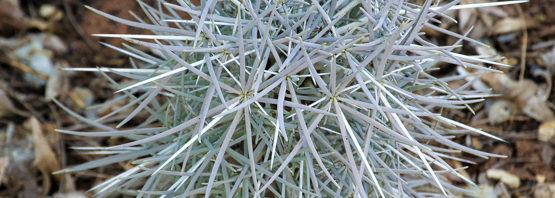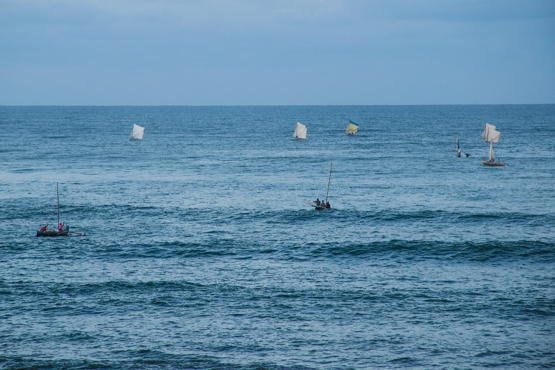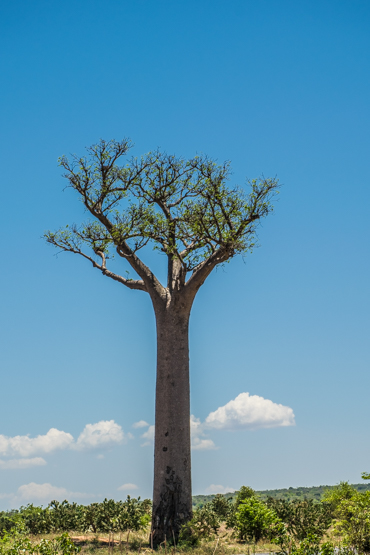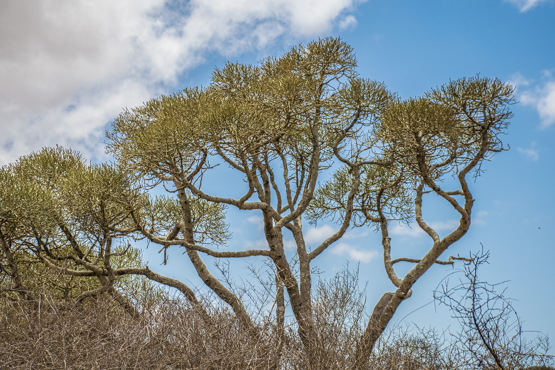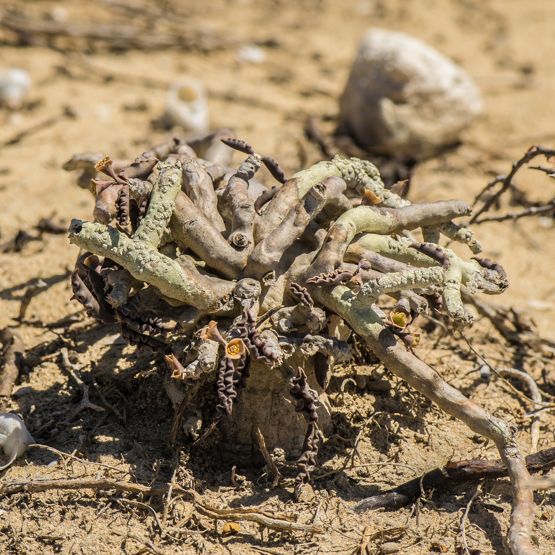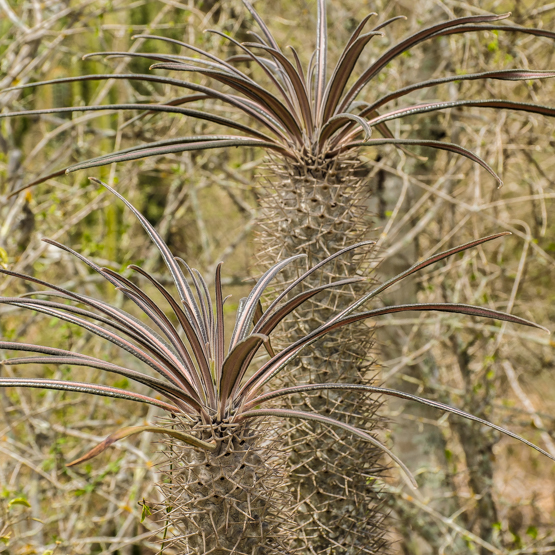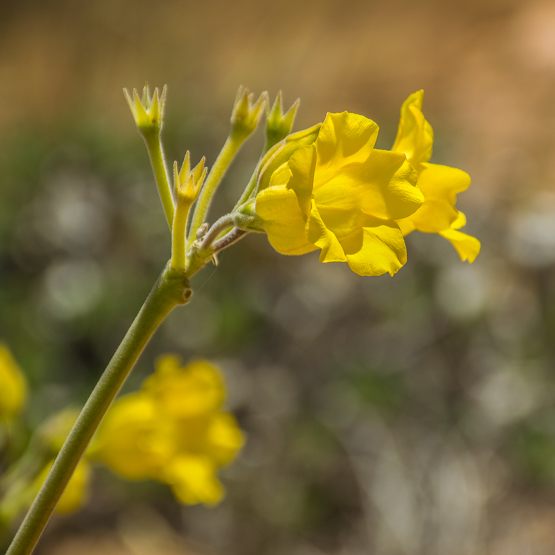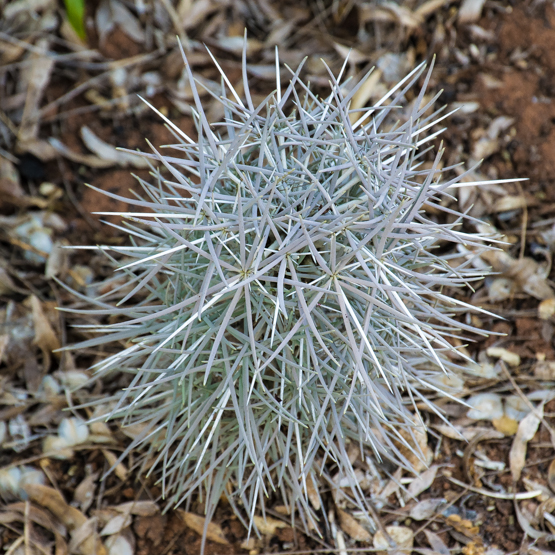The 6 species in the genus Alluaudia produce two forms of vegetative growth:
-long shoots with paired leaves sticking out above the spines and
-short lateral shoots, arising below the spines and also able to produce leaves.
Male and female flowers are gathered in branched inflorescences arising from the short shoots near the tips of the long branches.
A. procera starts as a shrub, but over time turns into a tree up to 10 m (sometimes even to 15 m) tall, with a broad trunk and more or less vertical branches. These branches are silver-grey and armed with conical spines which are (1-2.5 cm long and arranged vertically in lines that spiral upwards to the branch tips. The leaf blades are oriented to a vertical (in profile) position, thereby reducing overheating by sunlight.
The flowers are very small and yellowish-white.
This is the most widespread species in the genus, occurring in south and southwest Madagascar, mostly in coastal habitats on both acid and alkaline soils.
In cultivation, it is the most common member of the family. It is not only the most easily grown one, but it is also quick growing and easy to propagate from seed and cuttings. These properties make it attractive to use young specimens as stock to graft Didierea madagascariensis on.
